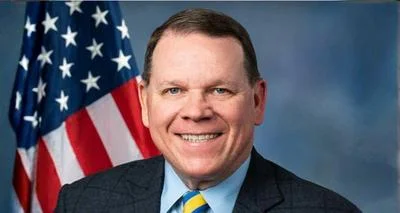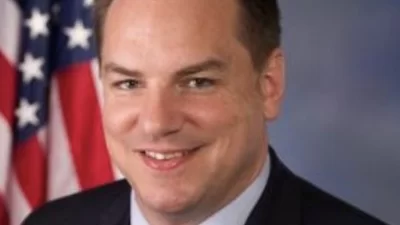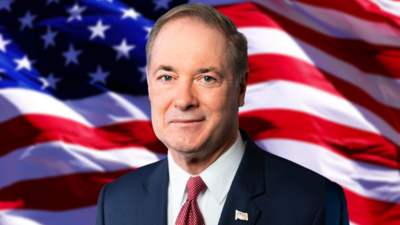Today, Rep. Gerry Connolly, Chairman of the Subcommittee on Government Operations, held a hearing to examine the progress the Technology Modernization Fund (TMF) has made in incentivizing federal agencies to invest in modern information technology (IT) systems, and how additional investment paired with robust oversight would improve how government serves the American public.
“The TMF is one tool that agencies can use to fund IT modernization outside of the annual appropriations process,” said Chairman Connolly in his opening statement. “And the program is proving incredibly successful. So successful, in fact, that demand is wildly outpacing supply. As we will hear from our witnesses today, the board has received 130 proposals from 60 agencies and agency components totaling more than $2.5 billion. Agencies want to get IT right, and Congress must provide them the resources and support to help them.”
The Subcommittee heard testimony from Raylene Yung, Executive Director of the Technology Modernization Fund for the U.S. General Services Administration; Gary Washington, Chief Information Officer for the U.S. Department of Agriculture; and David Hinchman, Acting Director of Information Technology and Cybersecurity for the U.S. Government Accountability Office.
Members and witnesses discussed how legacy IT systems can lead to higher costs, weaker cybersecurity, and negative service outcomes for taxpayers.
- “We all recognize the importance of upgrading outdated technology systems across the federal government,” said Majority Leader Hoyer at the hearing. “We understand that federal agencies cannot effectively serve the American people using 20th Century technology. Period. Such systems are costly, break down often, and are more vulnerable to cyber threats from Russia and from other adversaries. So, this is a national security issue, as well as it is an efficiency issue.”
- “The federal government now spends over $100 billion annually on IT and cyber investments, and about 80% of that money is used to maintain increasingly costly and aging legacy IT systems,” explained Mr. Hinchman. “The TMF represents a unique funding approach to improve, retire, or replace these burdensome systems, while also providing agencies with a non-traditional funding source to address emerging cyber needs.”
- In response to a question from Chairman Connolly, Ms. Yung explained: “We have this tremendous amount of investment happening annually, but it’s not being successful. Over 80% is for the maintenance of existing systems, and that’s not a good fit for today’s world. I would say the world is changing rapidly when it comes to technology. We know the demand for great technology is not only increasing over time, but I think as people, our bar for how we expect technology to work for us is also rising steadily.”
- Mr. Washington said: “As we continue to meet day-to-day requirements as well as respond to un-funded tasks such as those covered under Executive Order 14028, which includes the implementation of Zero Trust requirements, we rely on other sources such as the TMF to continue with our IT mission requirements and mandates. This has allowed us to plan and implement critical efforts such as capital planning, enterprise architecture, data analytics, and geospatial efforts which had been underfunded.”
- Majority Leader Hoyer, who served on the Appropriations Committee for 23 years, explained: “I understand the concern that appropriators have about having annual appropriations so they can apply oversight of the use of taxpayer dollars. Having said that, however, what we have found is that the appropriations process is too slow to respond in a way that we need to respond. If the private sector responded as slowly as we did, they too would be out of date with their technology.”
- In response to questioning from Rep. Brown, Mr. Hinchman explained: “The current $1 billion in the appropriation, while it could make a noticeable difference in agencies’ modernization efforts, is not enough quite frankly. With 24 major government agencies, all of which have their own modernization needs, that’s a small drop in the bucket compared to what would probably be required.”
- “My experience with the Technology Modernization Fund has been great,” said Mr. Washington in response to a question from Rep. Brown. He continued: “OMB and GSA specifically have been great partners in the fund. They have been very informative and assisted us through the entire process. So, the only change that I would submit in terms of the customer experience is the length of time, which has an impact on scope and impacts the cost estimates. But outside of that, we’ve had a great experience with the Technology Modernization Fund.”
- In response to a question from Congresswoman Norton about whether the TMF-funded Farmers.gov portal reduced financial or time costs to taxpayers, Mr. Washington answered that his project was one specifically requested by farmers for farmers to provide a "more modern experience online.” He explained, “Now farmers have the opportunity of going online, rather than going to a service center to get information on the Farm Service Agencies and other agencies within the Department of Agriculture."
- Mr. Hinchman said he believes that improvements can still be made to make the TMF more effective: “We appreciate OMB and GSA’s efforts in the past to address our outstanding recommendations, but we think there’s a little bit more that we could offer agencies so that they understand how this process works and how to navigate it. And, to that end, I think also we could be a little more transparent with agencies so that they know how the process works, what’s going to happen, what the timeline’s going to look like, and what they can expect.”
Original source can be found here.









